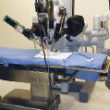Salvage Robotic Radical Prostatectomy after Failed Focal Therapy
With the increasing adoption of multi-parametric MRI scans that lead to more targeted prostate biopsy procedures, there is increasing consideration by patients and physicians of focal therapy for clinically localized prostate cancer. Focal therapy treats only part of the prostate gland with heating (high-frequency ultrasound therapy called HIFU), freezing, called cryoablation, or other focal techniques.
A concern about focal therapy is that there are high rates of cancer recurrence or persistence compared to treating the entire prostate with surgery or radiation therapy from the outset, which raises the question of whether patients treated with focal therapy can be “rescued” with “salvage” radical prostatectomy and/or radiation therapy.
A small prospective outcomes trial of salvage robotic prostatectomy by two experienced surgeons in the United Kingdom reported the early results of 23 men enrolled in a prospective outcomes trial of salvage robotic prostatectomy by 2 experienced surgeons. After 12 months, 17% used pads for urinary incontinence and 70% had a sexual function that was significantly lower compared with before treatment.” Cancer had spread outside the prostate in 57%, and in 30% cancer had invaded into the seminal vesicles. There were cancer cells at the surgical margins in 35%, and, overall, 91% were classified as having a high-risk disease based on the surgical pathology specimen. In addition, 17% had PSA evidence of cancer recurrence and then also received salvage radiation and hormonal therapy.
There were no reported surgical complications, but it is noteworthy is that the focal therapy regimen used in these patients did not treat the apex to the prostate, which, if done, may have compromised the sexual and urinary functional results more but also may have reduced the cancer recurrence rates.
Patients considering focal therapy for clinically “focal” localized prostate cancer should be aware that these results are not as good as are usually achieved with primary treatment with nerve-sparing radical prostatectomy, and the high early PSA recurrence rate is especially concerning. Moreover, the final pathology reports from the salvage prostatectomy specimens raise questions about the underestimation of the risk category of cancer in making the initial decision for focal therapy. Furthermore, surgeons undertaking a salvage prostatectomy after focal therapy should be skilled in challenging prostatectomy cases and understand preoperatively the extent to which the prostate had been treated with focal therapy.
Cathcart P et al, BJU Int 2021:doi10.1111/bju.15432










